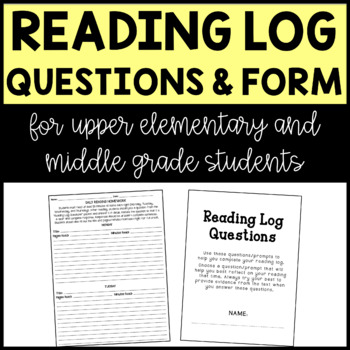Weekly Reading Log
- PDF
Description
Hold your students accountable with this easy-to-use reading log. This reading log resource includes a weekly form for Monday through Thursday and a lengthy list of categorized questions for students to answer after their daily reading that works for all genres and book types. Students may choose which question they respond to each day based on what they read; this allows student choice and flexibility while reflecting on and responding to their reading. By including a response component to your students' daily reading assignment, your students will think deeply about their reading each day.
This is a no-stress resource that is ready for you to distribute to students upon downloading and printing. I have provided directions for printing and included a description of my reading incentive program that I implement in my classroom.
Check out these other reading resources!
Starbooks Book Tasting (Top Seller)
Tic-Tac-Toe Fiction Reading Prompts
Nonfiction Text Features Scavenger Hunt (Free)
Monthly Reading Log with Incentive (Free)
Please reach out with any questions or concerns. All feedback is appreciated!
Follow me on TpT, INSTAGRAM, FACEBOOK, and PINTEREST to get updates on new products and classroom happenings!





